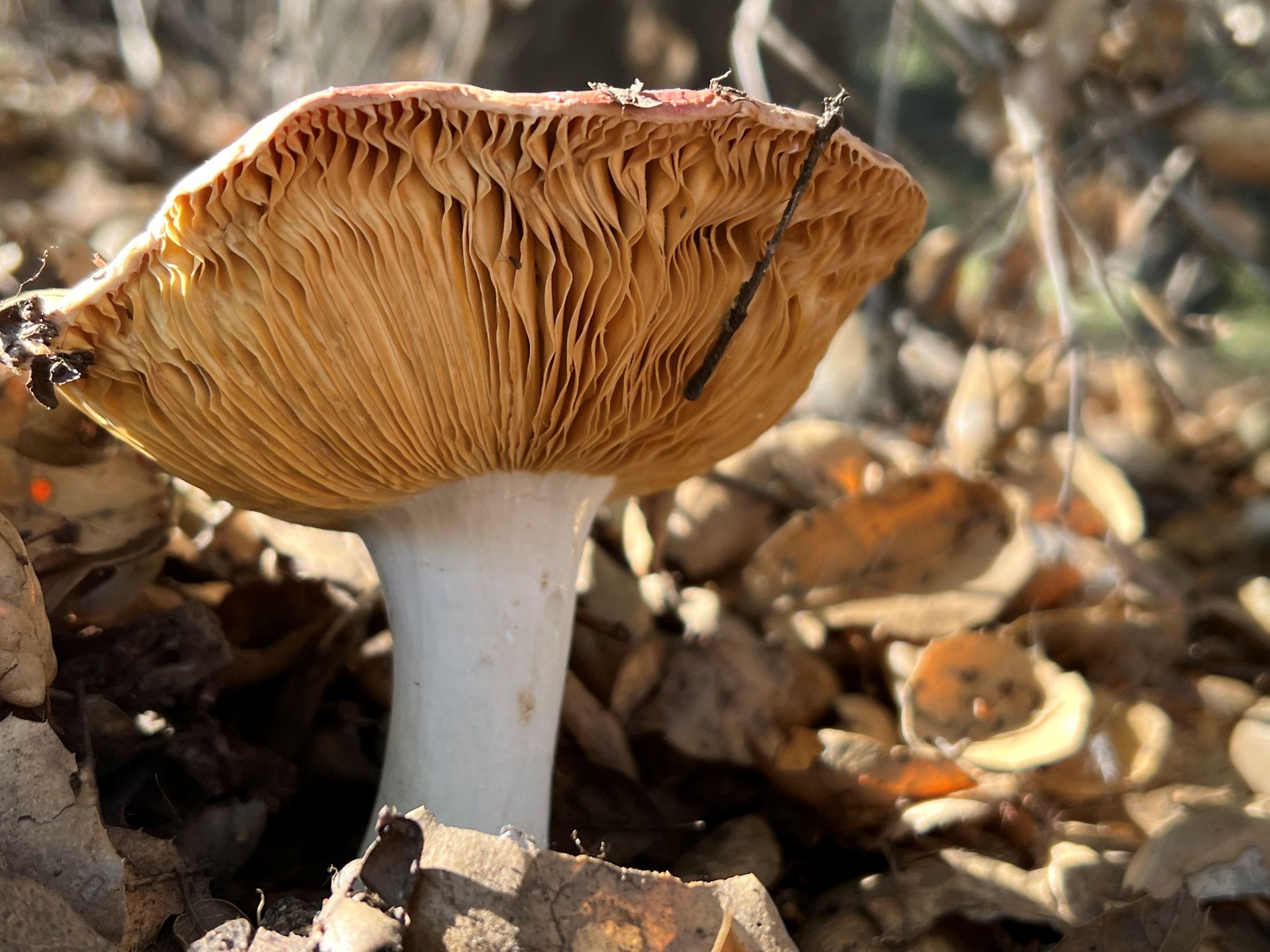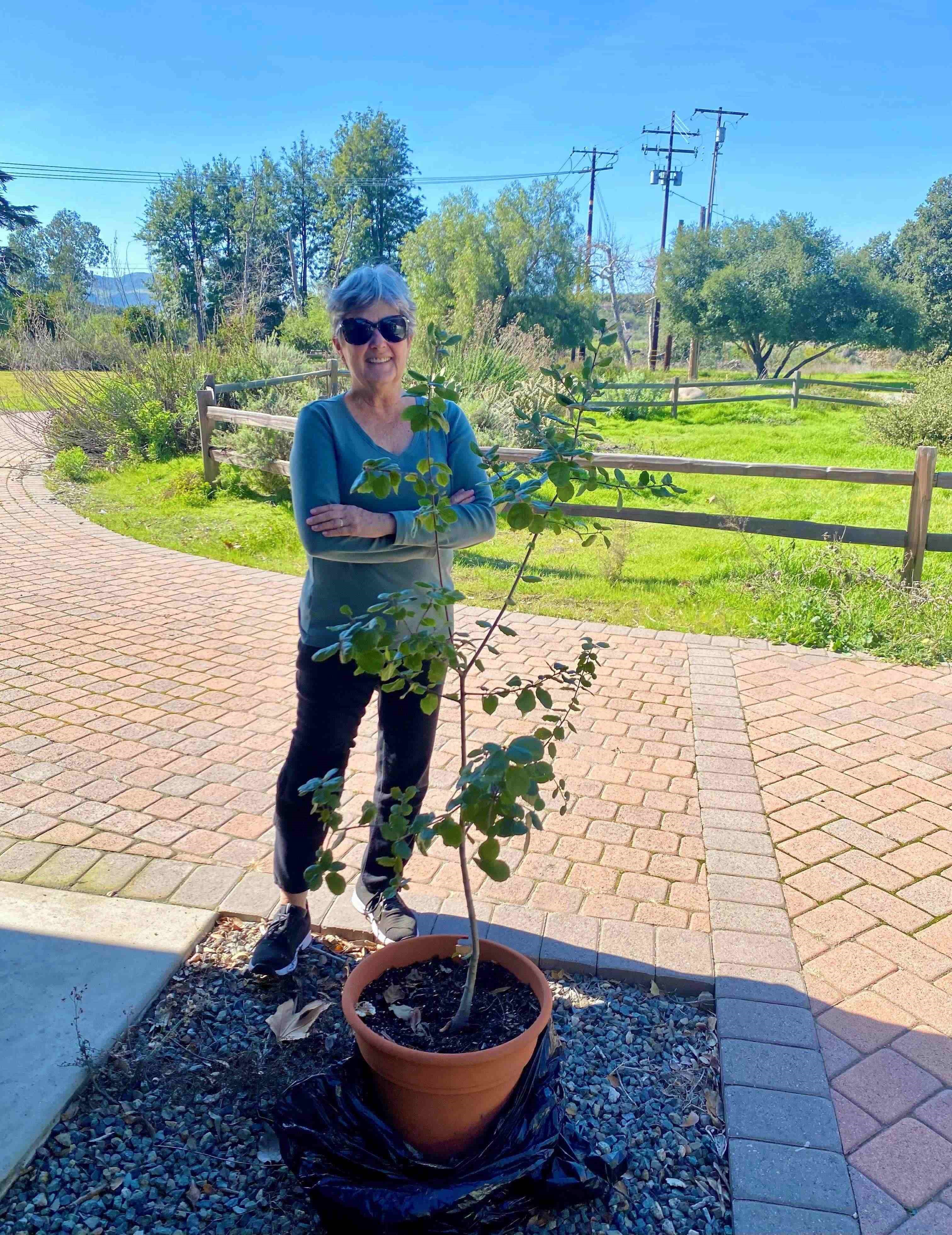
Natural Collaborations
“It comes with its own mycelium!” shouted Marsha as she made her way up the driveway of Nature Reserve Headquarters. Behind her was her husband Bill carrying a coast live oak sapling – a gift from Marsha to The Nature Reserve. She had grown the beautiful young tree from an acorn and now it stood a good five feet tall with leafy green leaves, and as announced upon arrival, a couple of young mushrooms growing in the soil surrounding the tree.
These mushrooms were the fruit of the mycelium. And if one were to look just beneath the soil you would find the mycelium – a dendritic network of white, root-like threads, routing their way through the soil intertwined with the roots of the oak. Collectively, these threads are part of a larger network called the “mycorrhizal network”. This vast underground network connects individual plants to help in the transmission of water, nitrogen, carbon, and other minerals.
It was as if Marsha had announced that the oak came “internet ready”. In fact, in his book, The Secret Lives of Trees, German forester Peter Wohlleben called this “communication” network the “woodwide web”. Through mycorrhizal networks, trees like Marsha’s sapling, can not only transfer resources but they can also “communicate” and cooperate by sending nutrients back and forth.
In this edition of our newsletter, we are focusing on cooperation and collaboration. Marsha’s oak tree and the accompanying mycelium are an illustration of how these two processes can occur in nature, but Marsha is also a great example of cooperation and collaboration. Marsha is a retired Nature Reserve Field Naturalist who now helps as a Nature Reserve volunteer, but she is also an OC Park volunteer, and member of the Caspers Park Foundation. She is part of a vast network of people who help preserve natural places and educate the community about their importance and beauty. And she’s not alone. The Nature Reserve is lucky to be connected with an incredible system of community organizations and volunteers who preserve some of Orange County's most beautiful and biodiverse open spaces. Together we share and collaborate on not only the scientific monitoring and management of Orange County’s natural spaces, but we also collaborate on how we best connect people with these spaces. We teach each other new skills and techniques; we share volunteers and guest speakers, and we volunteer for one another’s organizations.
Soon we’ll choose a place to plant this oak, where its accompanying mycelium may spread out its dendritic threads to join the larger mycorrhizal system of The Nature Reserve and surrounding wilderness. Below the oak an immense organization of cooperative mycelium will work symbiotically on behalf of the oak sapling. Similarly, each visitor to that tree, each volunteer, each community partner, and even each financial supporter help build the connections and transfer the resources needed for success on The Nature Reserve. If you want to become part of our “mycorrhizal network”, join us by visiting The Nature Reserve, volunteering, or becoming a supporter.

